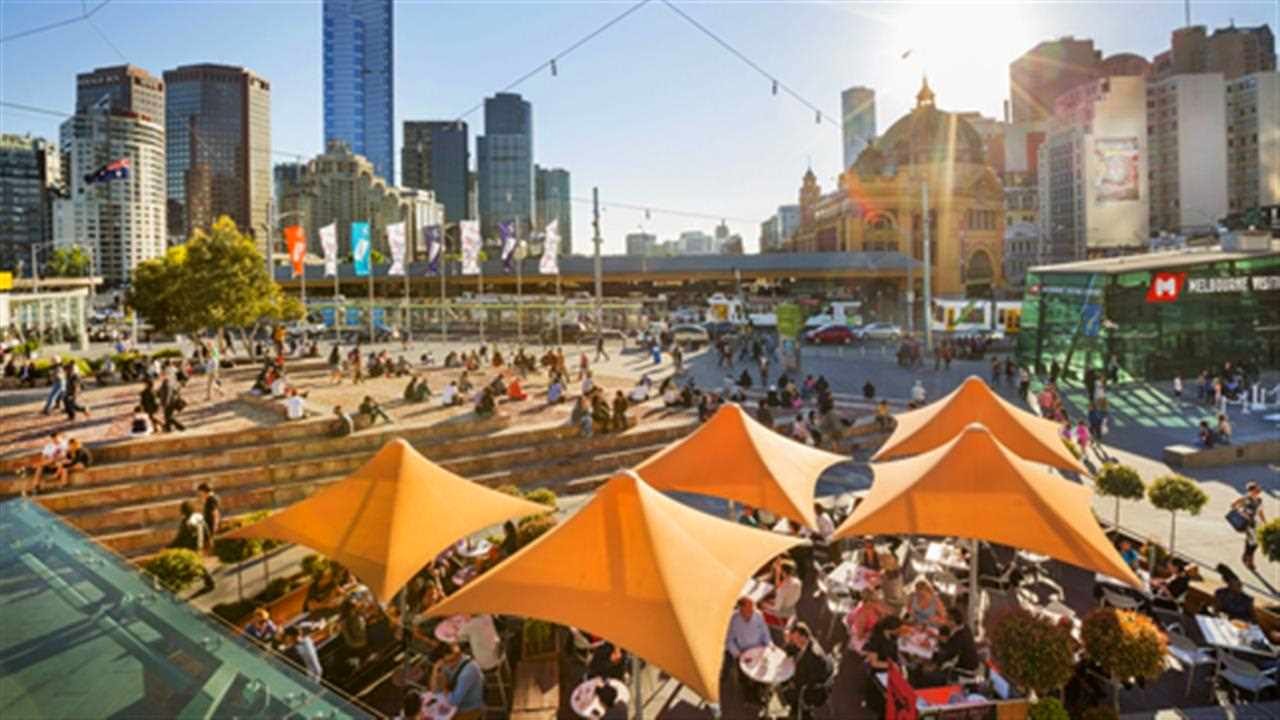Neighbours is recorded in a studio the size
of a Lilliputian telephone box, with furniture that looks like MFI rejects, and
walls that wobble whenever an actor picks up the phone. The designs may be
cheap and wooden but not as wooden as the acting and the dialogue; it soon
becomes clear that the most moving thing on the show is the scenery."
Victor Lewis-Smith, Evening Standard, 1993
Australia doesn't have the monopoly on awful soap operas (Britain and
Brazil have a good showing as well--by its very nature, soap opera is
ridiculous). And there is a lot more to the Melbourne Museum than the exhibits
featuring the above programme. For starters, it is has won a basketful of
awards for its design and content. There is plenty to see, and you need a
morning to do it justice and can combine it with a visit to the the Royal
Exhibition Hall and Carlton Gardens, which are some of the most elegant parts
of Melbourne.
It perches on the northeast edge of the CBD, a short walk north of
Parliament House and Collins Street. City trams pass along Victoria Parade,
where it bends into La Trobe Street, or it is a simple 7-block walk up from
Federation Square. Before it is Carlton Gardens, which are verdantly green and
lined with flowerbeds. The Royal Exhibition building dominates here; built in
1880, it is icing white and suitably grandiose, with a classical facade topped
by a dome. In front of it was an ivory fountain surrounded by pines. Behind it
was more interesting: a grey concrete concourse leads to the glass and steel of
the Melbourne Museum. If you are there during the week, the concourse is packed
out with schoolkids waiting to get into the IMAX theatre, which boasts to be
the biggest in the world. But didn't the Sydney one say the same thing.
The museum costs $6 and is pretty big,
so it is worth deciding what you want to see most first. I thoroughly recommend
the Forest Exhibition; a gigantic
Australian temperate forest is recreated within the museum confines. Glass
ceilings throw light onto soaring trees, gurgling streams and loamy black
earth. The whole thing is environmentally controlled and tunnels led under the
stream beds, allowing you to view what lives there. And every couple of yards
were small tanks containing indigenous snakes and creeping hairy spiders.
But it was the second level that
interested me. Most interestingly were the media and newspapers that
Melbournians subscribed to in the 20th century. I personally liked the record
produced by Barry Humphries during the 1956 Olympics. The government asked people
to put up foreigners in their homes. Humphries asked if you could choose? And
if so, could he have a red Indian? But the museum seemed to celebrate the
cities suburbia with the Neighbours kitchen set on lone
from Grundy Television. They had a copy of the script, not a wise move, because
all those pauses and verbal contractions you see during the show are actually
written into the script. And I thought it was just bad acting.
Phar Lap is a very famous Australian racehorse
and was stuffed on a podium for all to see. This is the museum's pride and gets
more visitors then any other exhibit. But I was interested in the history and
growth of Melbourne and what has made it the city it is today. And the museum
was very sketchy on this. There were a couple of items on the Gold Rush and and
Chinese immigration, but I didn't really discover how the city evolved.
Melbourne needs a really good history museum.
Talking of the Chinese, they used to
call Australia "Big Golden Mountain" and have their own Chinatown on
Little Bourke Street. Once you have finished the museum, why not hop down
there--the Crab won ton is to die for.






No comments:
Post a Comment